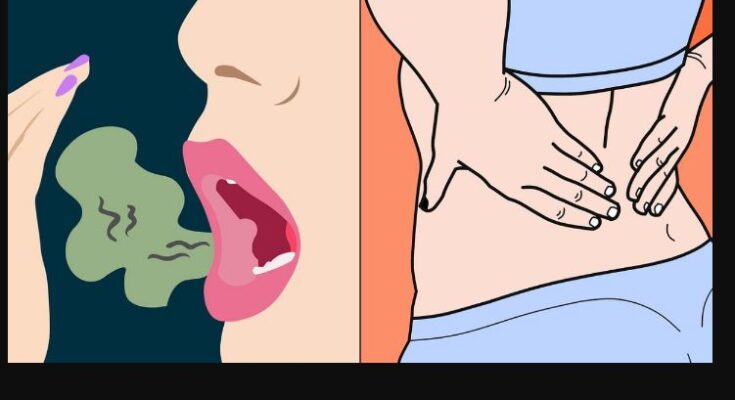Table of Contents
Introduction To 10 Warning Signs Of Mold Toxicit
Mold toxicity poses significant health risks, often overlooked until symptoms become severe. Understanding its warning signs, allergic reactions, causes, and precautions is vital for safeguarding health.
In this comprehensive guide, we delve into the intricate details of mold toxicity to equip you with essential knowledge for prevention and mitigation.
Understanding Mold Toxicity
Mold toxicity, often called mold poisoning, occurs when exposure to mold spores leads to adverse health effects. Understanding the nature of mold toxicity is crucial for recognizing its warning signs and taking necessary precautions to prevent health complications.
What is Mold Toxicity?
Mold toxicity refers to the adverse health effects of exposure to mold spores. Mold can release toxins known as mycotoxins, which, when inhaled or ingested, can lead to various health issues.
Impact on Health
Mold toxicity can manifest in diverse health problems, ranging from mild allergic reactions to severe respiratory issues and neurological disorders. Prolonged mold exposure can exacerbate existing health conditions and compromise overall well-being.
Common Symptoms
Recognizing the symptoms of mold toxicity is essential for early intervention. Symptoms may include respiratory issues, skin irritation, headaches, fatigue, and cognitive impairment. Understanding these warning signs empowers individuals to seek appropriate medical attention promptly.
Mold Toxicity: Allergic Reaction
Allergic reactions to mold are common and can vary in severity depending on individual sensitivity and the type of mold present. Understanding how the body reacts to mold exposure is crucial for effectively managing and preventing allergic symptoms.
Allergic Responses
When exposed to mold spores, individuals with allergies may experience various symptoms, including sneezing, coughing, nasal congestion, itchy eyes, and skin rashes. These allergic responses are the body’s immune system reacting to foreign substances.
Risk Factors
Certain factors increase the risk of experiencing allergic reactions to mold, such as a history of allergies or asthma, prolonged exposure to damp environments, and compromised immune function. Identifying these risk factors can aid in implementing preventive measures.
Management Strategies
Managing allergic reactions to mold involves minimizing exposure to mold spores through proper ventilation, moisture control, and regular cleaning. Additionally, allergy medications and immunotherapy may help alleviate symptoms in susceptible individuals.
Causes of Mold Toxicity
Understanding the underlying causes of mold toxicity is essential for effectively addressing the problem at its source. Various factors contribute to mold growth and proliferation, posing risks to indoor air quality and human health.
Moisture and Humidity
Excessive moisture and high humidity levels create ideal conditions for mold growth. Water leaks, flooding, inadequate ventilation, and damp environments allow mold to thrive and spread.
Poor Ventilation
Inadequate ventilation traps moisture indoors, creating a conducive environment for mold growth. Improperly ventilated areas such as bathrooms, kitchens, basements, and attics are susceptible to mold infestation.
Building Materials
When exposed to moisture, certain building materials, such as drywall, ceiling tiles, and carpeting, are prone to mold growth. Poor construction practices and the use of moisture-retaining materials contribute to indoor mold contamination.
Precautions Against Mold Toxicity
Taking proactive measures to prevent mold growth and exposure is paramount for maintaining a healthy indoor environment. Implementing preventive strategies and addressing moisture issues promptly can mitigate the risks associated with mold toxicity.
Regular Inspection and Maintenance
Regular inspection of indoor spaces for signs of water damage, leaks, and mold growth is essential for early detection and intervention. Prompt repair of leaks and moisture-related issues prevents mold from increasing.
Proper Ventilation
Ensuring adequate ventilation in all home areas promotes air circulation and reduces moisture buildup. Installing exhaust fans, using dehumidifiers, and opening windows when weather permits help control indoor humidity levels.
Moisture Control
Addressing sources of moisture promptly, such as fixing leaks, drying wet surfaces, and using waterproof materials in moisture-prone areas, is critical for preventing mold growth and subsequent toxicity.
FAQs (Frequently Asked Questions):
Q: Can mold toxicity cause long-term health problems?
A: Yes, prolonged exposure to mold toxins can lead to chronic health issues, including respiratory problems, neurological disorders, and immune system dysfunction.
Q: How can I test my home for mold?
A: Home mold testing kits are available, but hiring a professional mold inspector is advisable to assess and identify mold species accurately.
Q: Are all molds toxic?
A: Not all molds produce toxins harmful to humans, but even non-toxic molds can trigger allergic reactions in sensitive individuals.
Q: What should I do if I discover mold in my home?
A: Promptly address the source of moisture, remove visible mold using appropriate cleaning methods, and consider consulting a professional for thorough remediation.
Q: Can mold toxicity affect pets?
A: Yes, pets can also experience adverse health effects from mold exposure, including respiratory issues and skin irritation.
Q: How can I prevent mold growth in my home?
A: Implementing moisture control measures, maintaining proper ventilation, and conducting regular inspections are crucial to preventing mold growth and toxicity.
Good luck, game changer!
Explore our additional articles for more insights and enjoy!










